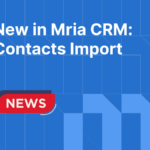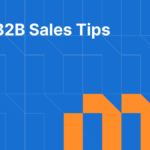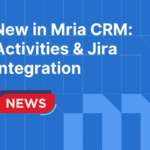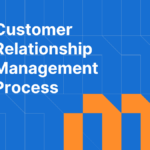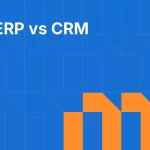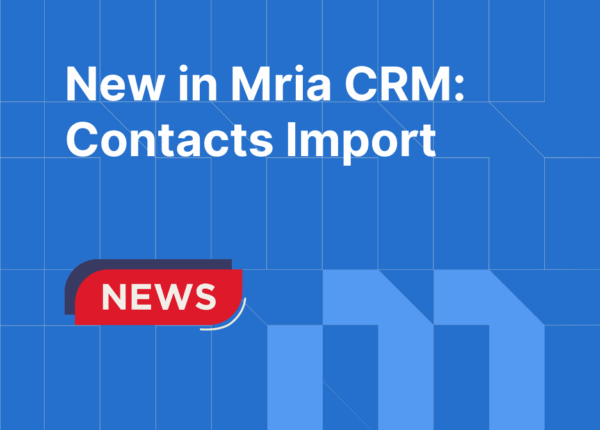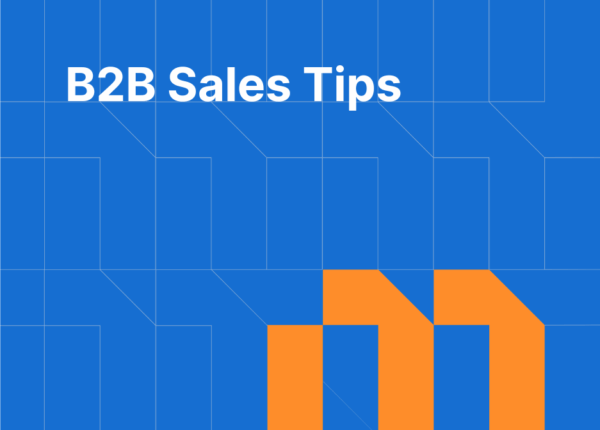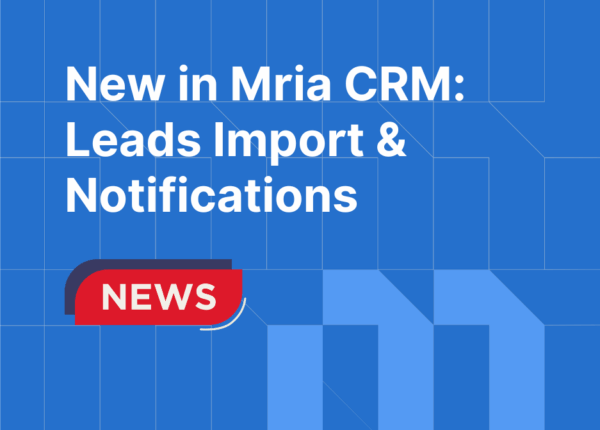Jira is where work happens for thousands of teams: product development, project management, support, and operations all live there. So it’s no surprise that more and more teams are asking: Can Jira also manage our customer relationships? In other words: Is Jira a CRM?
If you’ve ever searched for a CRM for Jira, you already know the answer: not quite. Jira was never designed as a CRM. And while many teams have tried to make it one through custom fields, automations, plugins, or third-party integrations, the results are often clunky, incomplete, or expensive to maintain.
We know this because we’ve lived it.
Before building Mria CRM, we tried every possible path: customizing Jira ourselves, testing existing CRM apps on the Atlassian Marketplace, even running standalone CRMs with costly Jira CRM integration. None of it gave us the seamless experience we needed.
That’s why we decided to build Mria CRM – a truly Jira-native customer relationship management solution built on Atlassian Forge. Not just another connector. Not a repurposed project management tool. A CRM that feels like it belongs inside Jira because it was built there from the start.
In this article, we’ll share our journey, explain why existing solutions fell short, and show how Mria CRM is redefining what CRM in Jira really means.
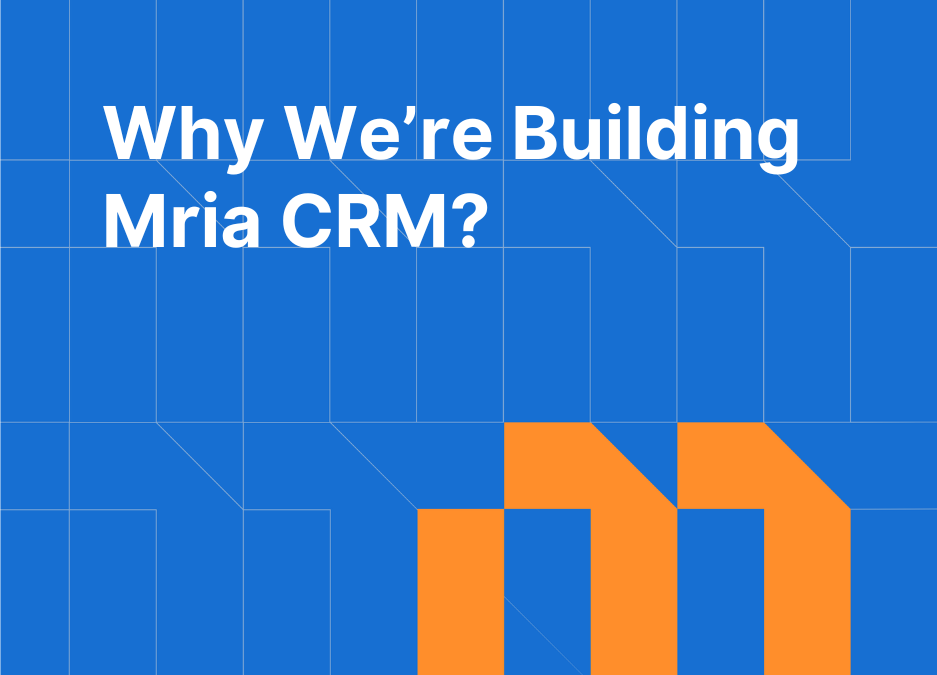
Table of Contents
Update – September 2025
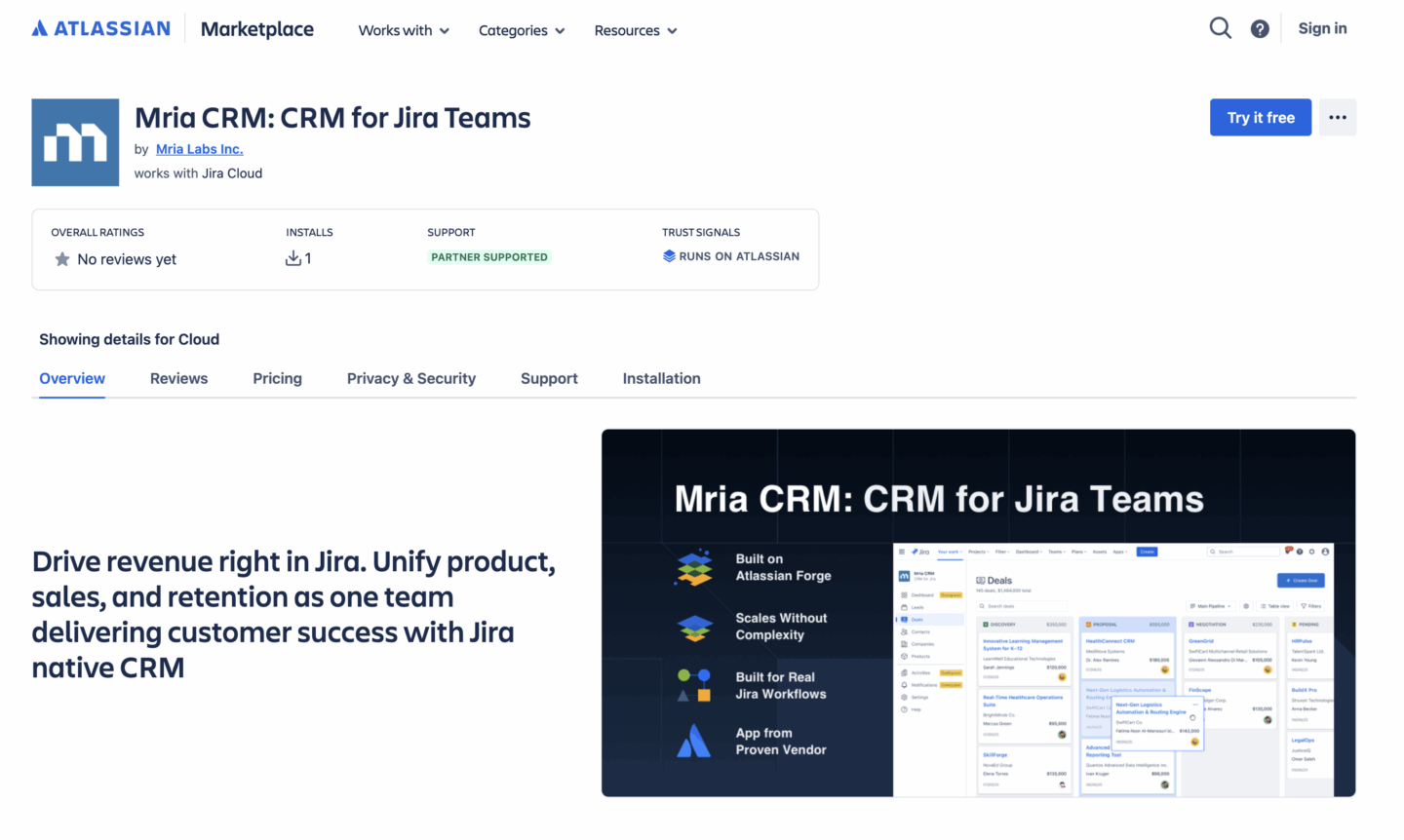
Mria CRM: CRM for Jira Teams is now officially live on the Atlassian Marketplace.
You can install the app today and start your free 30-day trial.
This article explains the journey that led us here, and why we built the first truly native CRM for Jira.
Our Journey: From Customizing Jira to Building Mria CRM
As a software development company with a growing portfolio of products, we faced a common challenge: how to align our sales, support, and development teams around the customer. Jira was already the backbone of our operations—used daily to manage projects, support tickets, and product delivery. So the question came naturally: Could we use Jira as a CRM, too?
We began by customizing Jira to act like a CRM. With tailored workflows, Kanban boards, and issue types for inquiries and accounts, we were able to create a shared workspace where teams could collaborate and track customer interactions. It worked up to a point.
But over time, the limitations became increasingly hard to ignore. Jira wasn’t designed to handle structured CRM data like contacts, accounts, or pipelines. Key information was scattered. Reporting was tedious. And collaboration across teams became more fragile as we scaled.
So we turned to the Atlassian Marketplace.
There, we found several apps claiming to provide CRM for Jira. Some offered decent contact management, others basic pipelines. But none delivered the complete experience we needed. The interfaces felt disconnected from Jira’s native design. Some apps required us to leave Jira entirely to manage core CRM data. Others were too limited and outdated.
Next, we tried going outside the Atlassian ecosystem – using standalone CRMs like Zoho and Pipedrive. While these platforms were powerful, integrating them with Jira was costly, complex, and prone to syncing issues. We constantly battled data silos, duplicated effort, and poor visibility across systems. What we gained in CRM functionality, we lost in efficiency.
At that point, it became clear: none of the available options, like custom setups, Marketplace apps, or external tools, gave us what we really wanted.
We didn’t just want a CRM that connected to Jira. We wanted a CRM that lived inside Jira.
That’s when we made the decision to build one ourselves, from the ground up. Forge-native, deeply integrated, and designed specifically for teams who already rely on Jira.
That decision became Mria CRM.
When Customers Are Part of Delivery, CRM Must Be Part of Jira
As more companies embrace Jira as their central workspace, the question isn’t just “Can Jira be used as a CRM?”, it’s “Why isn’t CRM already part of Jira?” For teams managing both customer relationships and delivery processes, keeping everything under one roof just makes sense.
Here’s why the need for a real CRM in Jira is growing across modern organizations:
One Platform, One Workflow
Jira is where work happens. It’s where support tickets are resolved, features are tracked, and projects are delivered. Introducing an external CRM tool often means duplicating information, breaking focus, and asking teams to split their attention across disconnected platforms. A CRM for Jira removes that friction, letting customer-related work happen where the rest of the work already lives.
Cross-Team Collaboration Around the Customer
In product-led and service-oriented companies, customer success involves multiple departments like sales, support, and development. When these teams all use Jira, it’s natural to want shared visibility into customer context. A Jira CRM integration might help to a point, but native CRM functionality makes true cross-functional collaboration possible.
CRM Activities Are Already Jira Issues
Many customer touchpoints already become Jira issues: onboarding steps, support escalations, feature requests. But without a structured way to connect them to customer records, it’s hard to see the full picture. Embedding CRM directly into Jira brings together all these interactions in a way that’s easy to manage and report on.
Security and Data Ownership
Using a CRM inside Jira means centralized control over permissions, audit logs, and compliance, all within the same ecosystem. Teams don’t have to worry about syncing sensitive customer data between tools or managing access in multiple systems.
Lower Cost, Leaner Stack
Standalone CRMs often come with a hefty price tag, integration challenges, complex onboarding, and overlapping or additional functionality that is not needed. For teams already using Jira, adding a native CRM means one fewer tool to maintain and a simpler, more efficient stack overall.
Better Reporting Across the Entire Lifecycle
From first contact to final delivery, customer data often spans teams and projects. With a CRM in Jira, teams can connect the dots across sales, support, and delivery, answering questions like “What’s the average time from deal to implementation?” or “How many open tickets are tied to this client?”
Designed for Technical and Customer-Facing Teams
In many organizations, sales engineers, support leads, and technical account managers are the real drivers of customer success. These users already live in Jira—they don’t want to jump into a traditional CRM just to log updates. Bringing CRM into Jira meets them where they already work.
A truly native CRM for Jira isn’t just a convenience, it’s a strategic move. It closes the gap between customer management and project execution, reduces inefficiency, and strengthens collaboration across the business
The Problems with Existing CRM Options for Jira
The rise of CRM for Jira solutions on the Atlassian Marketplace shows just how many teams are trying to solve the same problem. But while the demand is clear, the available tools haven’t kept pace with what modern teams actually need.
Some teams start with custom Jira setups—relying on issue types, fields, and automations to simulate CRM behavior. Others turn to Atlassian Marketplace apps that promise a native CRM in Jira. And still others connect third-party tools like Salesforce, Zoho, or Pipedrive via Jira CRM integrations.
Each of these approaches has its benefits, but also real limitations.
1. Custom Jira Setups: Flexible but Fragile
Customizing Jira can work at a basic level: a few custom fields, a Kanban board, and maybe some automation rules to track deals. But the more complex your sales or account management process becomes, the harder it is to manage.
- There are no native entities for contacts, companies, or deals.
- CRM data lives in freeform fields or linked issues, hard to report on or scale.
- Permissions and visibility become difficult to manage.
- Every new user has to be trained on a system that was never designed to be a CRM.
It’s a clever workaround, but one that breaks under the weight of growth.
2. Atlassian Marketplace Apps: Add-Ons, Not Full-Featured CRMs
There are several apps that offer CRM for Jira features: contact databases, pipeline tracking, or account overviews. But most of them:
- Lack structured lead tracking with no real pipelines, qualification statuses, or conversion workflows.
- Don’t offer real reporting, no visibility into pipeline performance, activity volume, or customer lifecycle metrics.
- Provide no deep connection with Jira issues – customer data and work execution remain disconnected.
- Feel bolted on, with a user experience that doesn’t match Jira’s.
- Store customer data outside of Jira’s core data model, reducing transparency and breaking context.
- Aren’t built on Forge, which raises long-term security and compatibility concerns.
These tools may fill short-term gaps, but they don’t offer a future-ready solution for teams scaling inside the Atlassian ecosystem.
3. Standalone CRMs: Powerful but Disconnected
Well-known platforms like Salesforce, Zoho, or Pipedrive offer powerful sales and customer management features. But using them alongside Jira comes at a cost—both in complexity and collaboration. Integration isn’t optional; it’s a requirement, and that’s where the real problems begin.
- Require third-party connectors just to integrate with Jira – adding setup time, cost, and technical overhead.
- Often demand an additional paid Marketplace app, and not all connectors support two-way synchronization.
- Fragment reporting when sales metrics live in the CRM, while delivery progress lives in Jira, with no single view of the full customer lifecycle.
- Force teams to switch tools to update information or check context, slowing workflows and increasing the chance of errors.
- Disconnect sales from delivery – customer context rarely flows smoothly between platforms.
- Break collaboration when support, dev, and sales teams operate in silos, leading to missed information and poor handoffs.
Standalone CRMs may offer depth, but for Jira-first teams, the integration overhead often undermines the very efficiency they’re trying to achieve.
What Makes Mria CRM Different
We’re building Mria CRM to meet the needs of teams who already work in Jira and want to manage their customer relationships there too.
For us, it’s not about adding features for the sake of it. It’s about creating the right structure, the right experience, and the right level of integration to support real collaboration across sales, support, and delivery teams. That means designing a system that feels native to Jira, but finally gives teams the CRM capabilities they’ve been missing.
Built on Forge, for the Future
Mria CRM runs entirely on Atlassian Forge – secure, scalable, and aligned with the direction of the Atlassian ecosystem.
- Native permissions, workflows, and UI.
- No external infrastructure or hidden data flows.
- Built to evolve with Jira Cloud.
Feels Like Jira, Because It Is
From navigation to layout, Mria CRM is designed to work the way Jira users already do.
- No extra logins or unfamiliar interfaces.
- CRM records live inside Jira, not alongside it.
- Seamless interaction across sales, support, and product teams.
Full CRM Functionality, Not Just Components
We’re not stopping at contacts or pipelines. Mria CRM is being built to support the full customer lifecycle.
- Structured lead tracking with customizable stages.
- Company and contact management with linked relationships.
- Deals connected to actual work in Jira.
- Activity timelines, audit logs, filters, and bulk actions.
- Reporting tools that surface pipeline metrics, activity volumes, and customer histories
Designed for Cross-Functional Collaboration
Jira is where your teams already work. Mria CRM brings customer management into that same space.
- Sales, support, and dev teams share context without needing extra tools.
- CRM records are connected to real work – issues, epics, and service tasks.
- Everyone sees what’s happening with a customer in real time.
Looking Ahead: The Future of CRM in Jira
If your team runs on Jira, your CRM should too. Mria CRM helps you:
- Eliminate redundant tools
- Streamline lead-to-deal processes
- Centralize contact and company management
- Track customer engagement without leaving Jira
We built Mria CRM not because we wanted another CRM, but because Jira teams like ours needed a better one.
